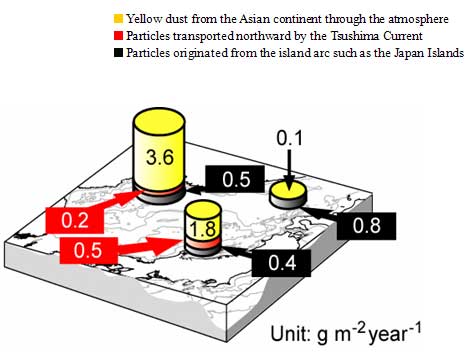|
Aluminum (Al) is a major component of terrigenous materials (e.g., clay minerals). The quantity of terrigenous materials that sink through the 1 km-deep layer to the seabed has been estimated using the quantity of particles collected at a depth of 1 km and the concentration of Al in the particles. From the elemental composition of particles, terrigenous particles in seawater were classified into three origins: (1) those from the Asian Continent mainly through the atmosphere (yellow column in Figure 2), (2) those transported from the East China Sea by the Tsushima Warm Current (red), and (3) those originating from the island arc such as the Japan Islands (black). Settling flux of terrigenous particles of each origin was inferred from the quantities of Al and elemental composition of particles. |





